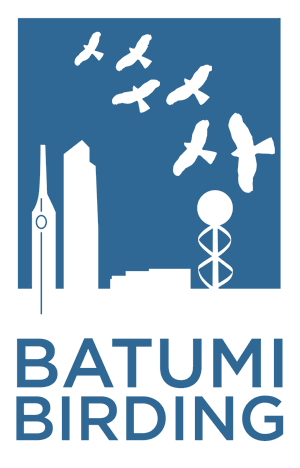There are few places on earth where bird migration is as impressive as in Batumi. In 2008, the first Batumi Raptor Count made headlines when over 800,000 raptors were counted at this poorly known bottleneck. Since then, hundreds of birders have visited the place, and its fame has continued to grow.
Obviously, the first reason to visit Batumi is its stunning raptor migration. From late August to early October, thousands of raptors belonging to 32 species pass through a coastal strip of about 10km wide. Spring migration is equally impressive but has never been properly studied. For a detailed account of the raptor migration we invite you to visit the Batumi Raptor Count’s website, but here are a few highlights, which you should not miss:
Experience a 100,000+ raptor day. Your best chances are August 28 to September 4 (Honey-buzzard) and September 25 to October 2 (Steppe buzzard). Such top days usually occur after a period of bad weather in the bottleneck.
Enjoy the unique harrier migration. Batumi is the only place in the world where harriers migrate in large concentrations. Especially in early September, you can observe loose flocks of up to a thousand harriers, mostly Montagu’s and marsh, but also good numbers of pallid, occasionally hen. Presumably, these come in from large roosts in the Kolkheti wetlands. Of particular interest are the dark morph Montagu’s and marsh harriers which can sometimes be observed here. If you are into identification problems, then you are welcome to attend one of BRC’s harrier ID sessions, held at the Batumi Birding visitor centre.
Spot a Crested Honey Buzzard. This rare migrant from Eastern Siberia is rather reliable in Batumi, peaking in the third week of September. Finding one is not easy though, because distinguishing features are often subtle and hybrids with European honey buzzards occur. However, you may be lucky to see a striking male, with its massive size and bold dark tail bar.
Marvel at the Eagles. If you are around in late September – early October, spend some time on the Shuamta watchpoint, sometimes dubbed ‘eagle mountain’. In the absence of a single hyperdominant species, the eagle migration in Batumi is highly diverse. Booted eagle is most common, followed by lesser spotted, short-toed, steppe, greater spotted, imperial and white-tailed.
But Batumi is more than raptors alone. Frequent rains and thunderstorms take migrating passerines down, and the parks of Batumi can be heaving with birds. Skulking birds like Savi’s warblers and corncrakes walk openly through the grassfields, looking for cover. Little bitterns end up in trees, and red-breasted flycatchers in flowerpots outside restaurants. The city itself is a great place to go birding in rainy weather, and shelter with a coffee or beer is never far away.
Another must is the Chorokhi delta. This relatively small area is remarkably diverse in habitats, and has an incredibly high turn-over of migrants. After a rainy night, the place is full of waders, terns, herons, passerines, and a long list of rarities has turned up at the site. The total species count for the bottleneck currently stands at 235.
Find out more about the Batumi region…
Sakhalvasho Watchpoint
Chorokhi Delta
Shuamta Watchpoint
Mtirala National Park
Batumi Seaside
Kolkheti Wetlands







